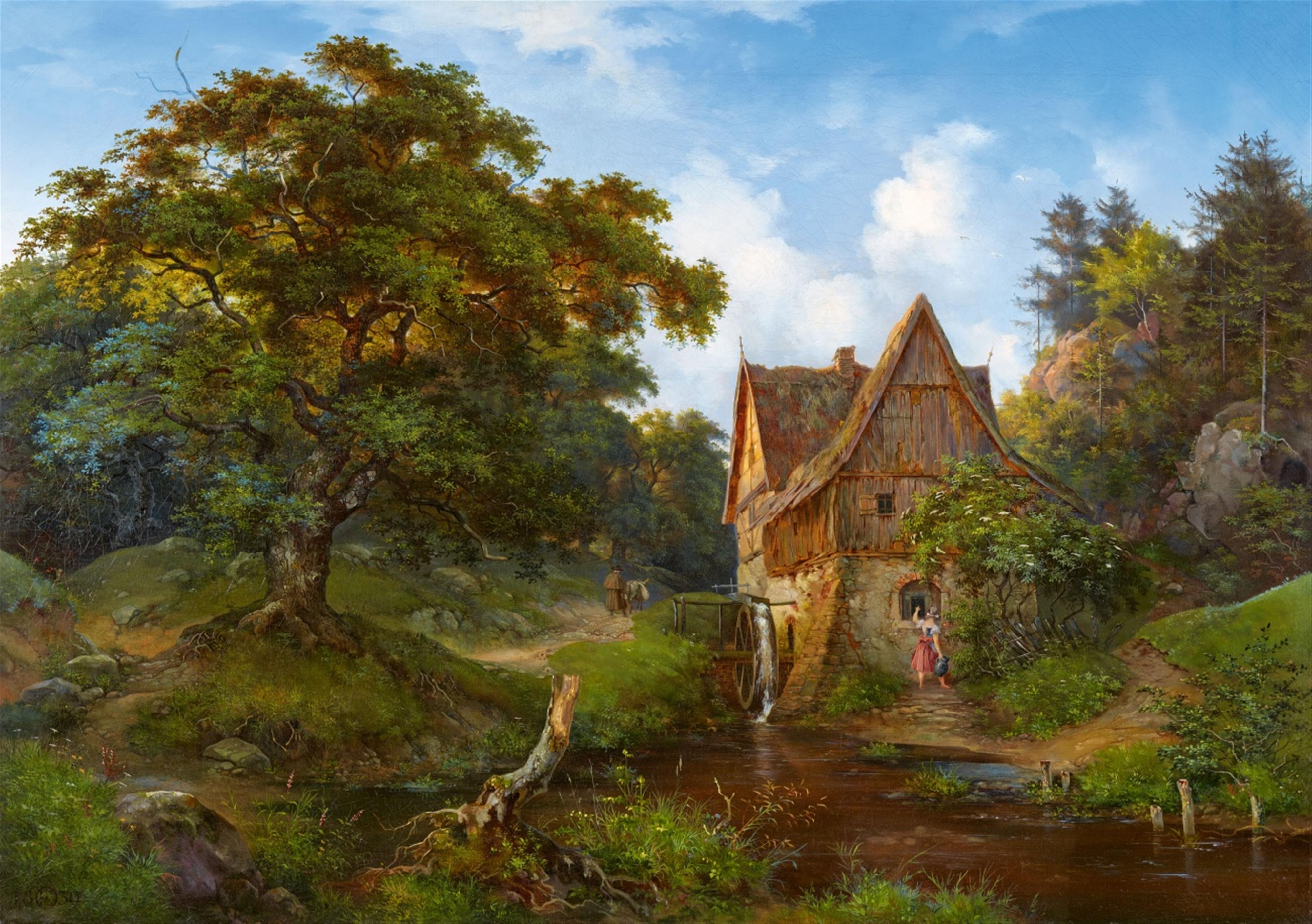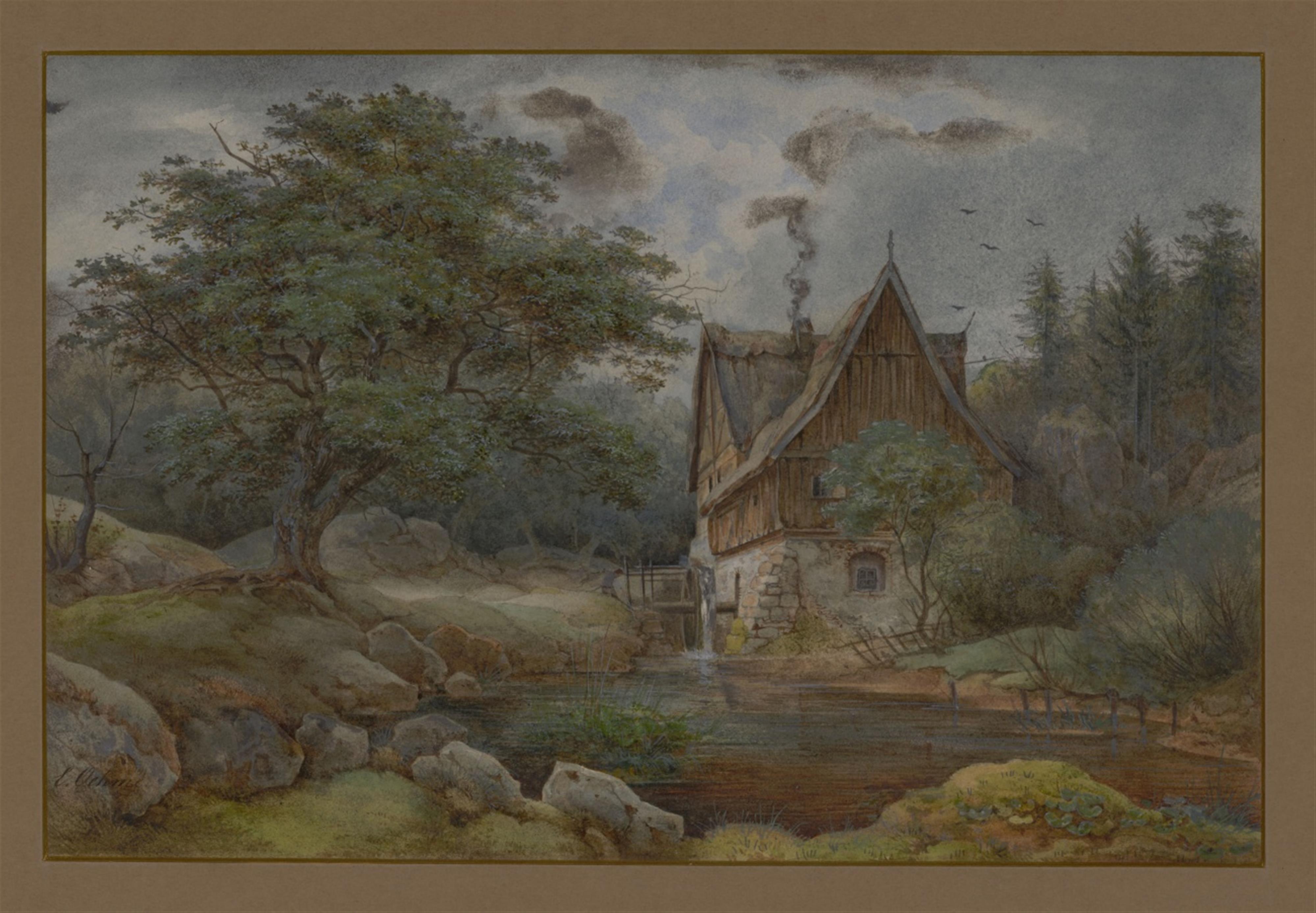Ernst Ferdinand Oehme
A Mill in Eichtal
Oil on canvas. 78 x 110 cm.
Monogrammed and dated lower left: EO 1839 (EO conjoined).
In a forest clearing by a stream stands a mill, surrounded by tall trees. A narrow path runs past it and disappears into the depths of the woods. A girl with a jug in her hand stands at a window of the mill whilst a man leads a donkey along the path. Both have their backs turned towards the painter and don't appear to have noticed him. The painter himself stands away from the path on the bank of the stream, looking towards the picturesque scenery.
“Mühle im Eichtal” bears witness to Ernst Ferdinand Oehme's interest in the local landscape, which captivates not through historical buildings or sublime motifs, but through its immediately suggestive poetry. The representation of nature is determined by the subtle modulations of brown and green tones and the play of sunlight falling through the foliage and illuminating the uneven boards of the mill in chromatic tones of yellow and ochre. In this landscape, as in other pictures of that time, one can recognize Oehme's effort to “soften the linear painting style by emphasisng painterly elements” (Bischoff, op. cit. p.90).
Oehme created this landscape in 1839 long after his studies under Johan Christian Dahl and his encounter with the art of Caspar David Friedrich, and also long after his Italy trip with his artist friend Ludwig Richter. The artists' conception of landscape changed at that time, the influence of the Düsseldorf painting school making itself noticeable - this period has been termed Late Romantic, in contrast to the first decades of the 19th century in Dresden, when landscape painting was mainly influenced by Friedrich and Dahl.
A watercolour by Oehme with almost the same composition has survived, and may be considered the preparatory work of the present painting (ill. 1; Museum der bildenden Künste Leipzig, inv. no. 7077). The watercolour is complete but is missing the figures which serve as an anecdotal element in the painting. The changes to the layout of the landscape also catch the eye. Oehme has replaced the stones on the bank of the stream with the green of the grass and has thickened the tree foliage. This has created the poetic image of a native forest landscape coined by subtle pictorial light and colouring.
Provenance
Acquired from the artist in 1839 by the Sächsischen Kunstverein. - Won in a raffle on 20.12.1830 by Hofmann, Bad Muskau. - German private collection.
Literature
Ulrich Bischoff (ed.): Ernst Ferdinand Ohme 1797-1855. Ein Landschaftsmaler der Romantik, Dresden 1997, p. 200, no. 136.




